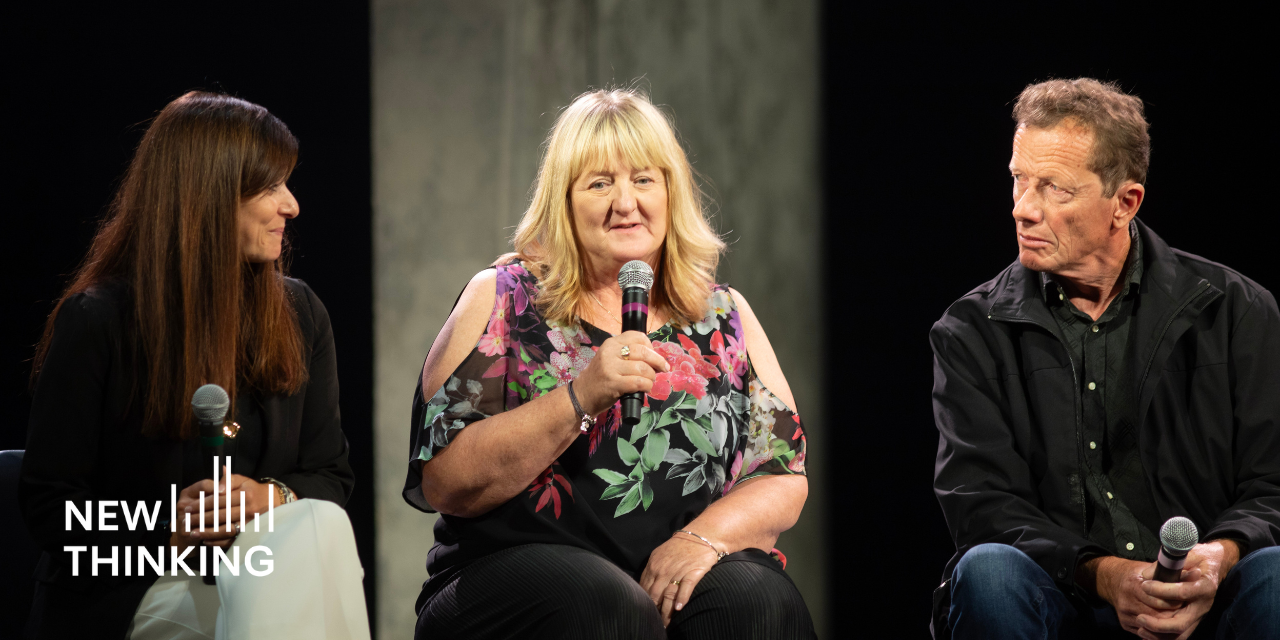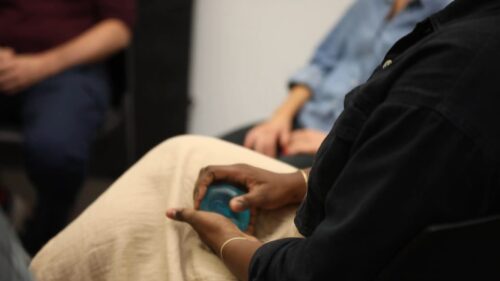Dr. Catherine Coles has been a researcher and fellow in the Program in Criminal Justice Policy and Management, John F. Kennedy School of Government, Harvard University since 1996. In December 2001, Nicole Campbell of the Center for Court Innovation and Catherine Coles discussed the burgeoning field of community prosecution including its origins, best practices and its future.
How do you define community justice and community prosecution?
I see community justice as justice officials working directly with the community and giving high priority to the concerns and priorities of community members. Also, community justice attempts to build a capacity within the community for improving and maintaining public safety. Community prosecution is doing just that. There is a real commitment to citizen priorities. That means that citizen priorities can have an impact on the work that prosecutors do, whether it’s by affecting the weighting of cases that they process, the cases prosecutors choose to file and focus on, or how particular cases might be handled. To me, community justice also involves problem solving, carried out in a coordinated and collaborative fashion that involves justice agencies working together with various governmental bodies, the private sector, and citizens themselves. Citizens have described this to me as “a new way of government doing business in our community.” So, I draw problem solving into the community justice framework, and see it as a central part of community prosecution as well.
What is the relationship between the work of a community prosecutor and the work of a community police officer? How does their work intersect?
The police-prosecutor line is a really interesting one because the line is unclear, is inconsistent across different locations around the country, and seems to be evolving as we speak! First of all, community prosecution has developed and spread more rapidly than did community policing. It took a lot longer in policing because the police were, by and large, the only ones out there engaging in community justice. Prosecutors moved into community justice at a later time when the momentum began to build up.
As to the line between police and prosecutors, where you have community policing and prosecution going on alongside each other, both police and prosecutors work directly with the community; both are involved in problem solving and devising strategies for crime prevention; and the need to work together is continual. The relationship is a close one, but each obviously has particular roles that only it can play—only prosecutors can prosecute cases, although with a great deal of assistance from police. Police do more work on the streets and in the community. There are limits on the extent to which prosecutors can be involved in investigations that police conduct.
Some of the lack of clarity in the line between police and prosecutors needs to be worked out through close legal analysis. And where it doesn’t involve strictly legal issues, but ethical or moral issues instead, then I think we have to have more of a public debate about those things. Community prosecution is not in its final form. It may be that prosecutors need to reach out to certain communities to help them form associations or groups, or to develop leadership capacity. It may not be entirely appropriate for prosecutors to continue this role in the long-run. There may be an immediate need for it, but that may be a line that needs to be redrawn at a later time when the capacity of communities improves and is strengthened.
With regard to lines between prosecutors and other agencies, that again is a really tough one. Prosecutors say they are filling gaps other agencies have created through inaction, or not doing their job. For instance, if the city health and safety departments are not adequately enforcing health and safety codes, then the Prosecutor’s Office can use its power and authority to get the city to do effective code enforcement. Prosecutors’ standing in the community and their position within the justice system give them the power and authority. That authority can be used to prod other agencies into doing what they should be doing.
How does a prosecutor define “community”?
Prosecutors can work with the community at different levels. They might work with a neighborhood, cultural or ethnic groups across different neighborhoods, the faith community, business interests, a chamber of commerce or a business improvement district. These all represent interests within the community. I think the community can be defined in different ways at different levels from very small at the neighborhood level to a much larger level where you don’t have the involvement of every single person in that community. I guess the biggest concern for me in talking and thinking about the community and the work that prosecutors do within the community is the danger of excluding. The community that prosecutors work with, for the most part, needs to be an “inclusive” community that does not seek to exclude any particular group.
Community prosecutors will very often reach out first to crime-watch groups, neighborhood associations, and to leaders of other local groups in the community. However, some neighborhoods in some of the large inner cities are disorganized and don’t have these types of groups in their systems. That’s a real problem that raises the whole question of what we do in community justice. Is it our job to go out and create some kind of neighborhood organization? I think that’s a very difficult arena right now and we do not have a final answer to that question. But at some point, the police and the prosecutors have to step back and try not to impose their own perception of what an organization should be within a community.
In 1998, you observed that no single office you studied had come close to achieving a complete transformation to what you presented as the “new prosecution strategy.” Have any offices come closer to a complete transformation since then?
First, I defined the new prosecution strategy as when the entire office has come to embody a philosophy of community prosecution. There isn’t simply a community prosecution unit–instead, you have an office that buys into the core principles that I talk about as being part of community prosecution. I still don’t think that there is any office in the country that has come to this point. There are, however a number of experienced offices that are approaching a turning point where the culture of the office is changing. The key to this shift is dedicated leadership. When the head of the organization and the executive staff have really adopted a new conception of what the mission of the prosecutor is, they begin re-prioritizing what the overall goals and objectives are.
Can you give some examples of model community prosecution programs that are closest to a complete transformation in ideology?
Portland Oregon’s District Attorney’s office is an office that has moved along that path. District Attorney Ronnie Earle in Austin, Texas, has a very small community prosecution unit but the overall office embodies the ideals of community prosecution. And, a majority of people within that office have changed their own vision of prosecution. In that sense, the Austin office has moved quite far along the way, as well. The Suffolk County District Attorney’s office in Massachusetts has also moved in that direction, to a lesser degree. But, the entire office has not adopted the ideals of community prosecution.
In Kansas City, you have what they call “the COMBAT administration” [COMBAT stands for Community-Backed Anti-Drug Tax—it is a formal program funded by the county] set up alongside the more traditional lawyer-and-support staff portion of the office. The COMBAT administration office is made up of public health specialists and administrators who started things like the drug court and day report center. They were trained in other areas so they can contribute to a total problem-solving crime prevention approach.
The increased hiring of these non-lawyer specialists in prosecutors’ offices is an important part of change in the organization. Elevating representatives of those staff to senior executive-level positions and developing new expectations for the role of prosecutors is very important. New recruitment criteria and performance measures have to be pursued, as well, and not very many offices have done that. They are doing a better job of recruiting than developing performance measures. These are just a few of the things that go into organizational change.
What are the most effective methods of mainstreaming community prosecution?
You’re essentially asking how does an organization change. In answer to that, the vision of the head prosecutor has to change significantly. Then an important first step is an emphasis on education within the office. I find the most useful strategy in getting prosecutors to think differently is to send them out to other community prosecution sites because prosecutors really learn from each other. So, if you have an office that hasn’t done much yet, and the leadership wants to move into community prosecution, one of the things that they need to do is to bring experienced community prosecutors from other locations in to talk to their staff. Staff will also need to visit other sites where community prosecution is going on. Another key is improving the capacity and training of your prosecutors in civil law and encouraging them to think more broadly about using and applying remedies other than criminal case processing.
Beyond that, there’s the question of whether separate programs or units should be created. There are many different types of community prosecution units that have been started around the country. In some cases, that may be the way to go, just to get something off the ground. You might assign a certain number of prosecutors to work out in the community or at least to be a liaison to a particular area—to meet with residents/business owners and learn about their concerns. Then you assign responsibility for a particular geographical area, for handling all cases from that area as well as for maintaining community contact and working with police and other criminal justice agencies. I think something that’s been tried less often but would also work would be assigning particular prosecutors in an office to address certain types of problems of concern to a community—say prostitution, auto theft.


